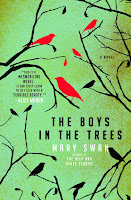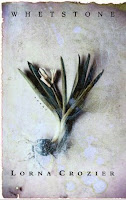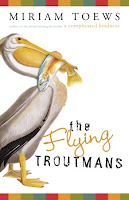I’ve spent the better part of today, my 3rd anniversary, puttering around the house trying to organize the massive amounts of books we have scattered from pillar to post. I wanted to accomplish a couple of things: 1) be able to find the book I have in my mind to read next, 2) organize some reading challenges for 2009, and 3) make sure that I’ve got my books in chronological alphabetical order outside of the ones set aside for challenge purposes.
Sigh.
It’s never an easy task culling and organizing books but I’ve become overrun with titles after four years of working in publishing at two different houses. I’m being ruthless. Will I read that book again? If the answer’s no, it’s going. Why did I bring that home again? Who knows? Toss it across the room. So I’m still knee-deep in piles and piles of books, but here’s what I’m thinking for 2009:
1. Around the World in 52 Books
I managed to read just 13 books in this challenge last year, so not close to one a week but close to one a month. I’ve got 20 titles on the list for 2009.
2. 1001 Books Challenge
Over the past year, I managed 14 books from my master 1001 Books list for 2008. Today I spent a good part of the day going through ALL of our books and finding every title that we have in the house that’s on the list. We have, um, 66 — so it’s doubtful I’ll manage EVERY one, but I’ve got them all listed according to the reference book’s order. Knowing they’re all there and on the shelf or on my Sony Reader will absolutely keep me from buying any more. Goodness.
3. Cleaning Out My Closet
Working in publishing, loving books, knowing other book lovers, all of this means that I’ve got piles upon piles of books in my house that never seem to get read. I’ve narrowed down the top 20 that I’d like to at least try to crack the spines of over the next year, so here’s my “off the shelf challenge.”
4. A Shakespeare Challenge for 2009
I came across this today (thanks Melanie!) and I’ve been staring at Shakespeare by Bill Bryson for months. The rules are simple: “You can read anything about or related to Shakespeare — fiction or non fiction, straight bio or authorship debate — and you can read the plays and sonnets as well.” The challenge is to read 6 of the above; and so far I’ve got one on my list.
5. The 2nd Canadian Book Challenge
I’m still working my way through the challenge I set out for myself this year: “For the ladies.” I’ve collected a number of books in one place that are all by Canadian women authors. I’ve got 6 more books to read by July 1st, 2009.
6. The Better You Read — The Better You Get
Going through the books I’ve come across a definite theme: I collect all kinds of “green” themed and “self-help” type titles and then NEVER EVER read them.
Now I’ve read 74 books this year, plus a number of titles that I haven’t mentioned (at least 20 Harlequin romances for copy work) and some books that I’ve read for work that aren’t even close to being published yet so I don’t want to blog about them. Next year my goal is to finally get to 100, even though I haven’t once (in the past few years of blogging) even come close, it’s time I stepped up! I suppose that means one of my New Year’s Revolutions will have to be watch less television. But I was headed there anyway. Lately, I’ve been bored to tears by the tube. Haven’t you? Of course, I’ve got to leave room for the 100+ books that’ll probably come in through work, through good reviews, through prize winning, through blog reviewing, through friendly recommendations…but it’s a start.






